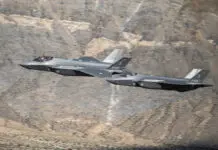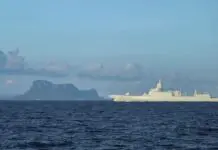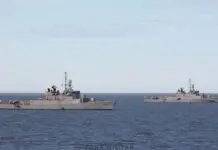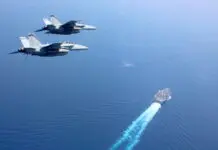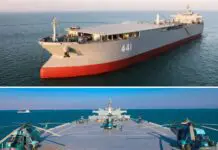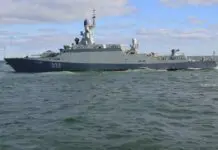On its 40th anniversary this week, the Police Aviation Directorate (Diravpol) of the Peruvian National Police (PNP) has become one of the most experienced institutions in its field in South America in terms of low-intensity aerial warfare. We say this because its personnel and aircraft have not only been in charge of what a police aviation corps should typically do, i.e. patrolling the airspace to pursue bank robbers, illegal traffickers and other organized criminals.
In the case of Divrapol, its missions also include tactical anti-drug operations in the Upper Huallaga valley between 1985 and 2000, and against terrorism in the same period, being involved in combats against the armed band ‘Sendero Luminoso‘ and the now extinct Tupac Amaru Revolutionary Movement (MRTA).

We do not have to go far back in time to know actions of valor of this unit, remember the downing of the Bell UH-1H registration PNP-357 on April 12, 2012 during a combat mission where the pilot, Major PNP Nancy Flores, was shot down by a sniper, apparently a Colombian mercenary.
It was within the framework of the tough confrontations in the jungle of Pichari against a heavily armed narco-terrorist column, which culminated in the death of three PNP non-commissioned officers and two Army non-commissioned officers, and ten other military personnel wounded. This took place in the Apurimac, Ene and Mantaro River Valley (VRAEM), where at this very moment Diravpol aircraft are still operating against the same enemy, more experienced and better armed than before.
On-Scene Capabilities.
Police Aviation currently has a varied fleet of fixed-wing and rotary-wing aircrafts, which are used for patrolling, transport, rescue and interdiction, where U.S. and Russian aircraft stand out.
Such as the ‘Huey II’, destined to support the Anti-Drug Trafficking Maneuvers Division “Los Sinchis” in the central jungle, aircraft that were transferred a few years ago by the United States Bureau of Narcotics Affairs (NAS). They are used in inserting and extracting PNP special forces patrols that hit the mountain camps where cocaine base paste and cocaine hydrochloride are produced, as well as in Close Air Support (CAS) or Combat-SAR.


There are also 2 new Mi-171Sh and 1 Mi-17-1B recently repaired, all based in Lima for the aerotáctic support to the units of the National Directorate of Special Operations (Dinoes-PNP) in any part of the country.
The high-altitude flight capabilities of the latter systems make them ideal for providing services between the coast and the high Andean regions located beyond 3,800 meters above sea level.
Moreover, in the town of Huaraz, in the Ancash region, there is a High Mountain Police detachment that frequently works with one of the “Hip”, in the rescue of explorers lost in the Andes Mountains, above 5,000 meters above sea level.
In addition to these means, there are 5 Airbus Eurocopter EC-145s for air patrol and rescue at sea, means that support the demand for security in the skies over the urban scenario of Lima, mainly. The Asia-Pacific Economic Cooperation Forum (APEC 2024) is currently being held in five Peruvian cities, which means more than 160 events with delegations from 21 countries that need to be protected. In order to do this, the EC-145s are on alert to respond to any emergency, carrying out preventive air patrols and accompanying high-level delegations in their movements.

In addition to these capabilities, Divrapol has 2 Antonov An-32B for strategic deployment at the national level, both for personnel and cargo, or for dropping parachute troops.
Also, there are 1 Beechcraft 1900C, 1 Harbin Y-12 Turbo Panda, as well as 2 Cessna, of which 1 is type 206 and 1 model T210N Turbo Centurion, the first one used for the transfer of persons claimed by the justice system.
There is also a long list of aircraft of various types, which are awaiting a decision for their repair or final disposal, including several Cessnas that were seized by drug traffickers.

Most of this fleet is located at the main aeropolice base, on the south ramp of Jorge Chavez International Airport, in Lima, where maintenance workshops and training classrooms are also based.
The rest of the aircraft are deployed in the Deconcentrated Police Aviation Units, which are the facilities in the “combat zone”: Santa Lucia Air Base (San Martin region), Tingo Maria (Huanuco region) and in the VRAEM Police Front, interacting with Army, Air Force (FAP) and Navy units.

Future projections
After four decades of service, the capabilities of the PNP’s Divrapol have been changing as new challenges have arisen, and now there is also a Drone Squadron. These unmanned drones work in search and rescue, social conflicts, illegal mining, preventive patrolling, gang intervention and integrated patrolling in coordination with local municipalities.

However, the repowering of this large police unit with more modern and capable aircraft is necessary, considering the situations of social upheaval to be addressed in the various regions of the country, as well as natural disasters such as the El Niño Phenomenon (FEN).
The closest to meeting this need is the announced purchase of the Embraer E190F, criticized for leaving aside the Leonardo C-27J Spartan, in full use with the Peruvian Air Force (FAP), the Embraer KC-390 and the Airbus C-295M.
However, basic training aircraft, both fixed wing and rotary wing, still need to be defined, especially in the latter, where the lack of aircraft means that the FAP is in charge of training future PNP aviators.
*Photographs: Peruvian Ministry of the Interior.
You may also like: The Peruvian Air Force seeks to advance in the recovery and repowering of its combat aircraft




